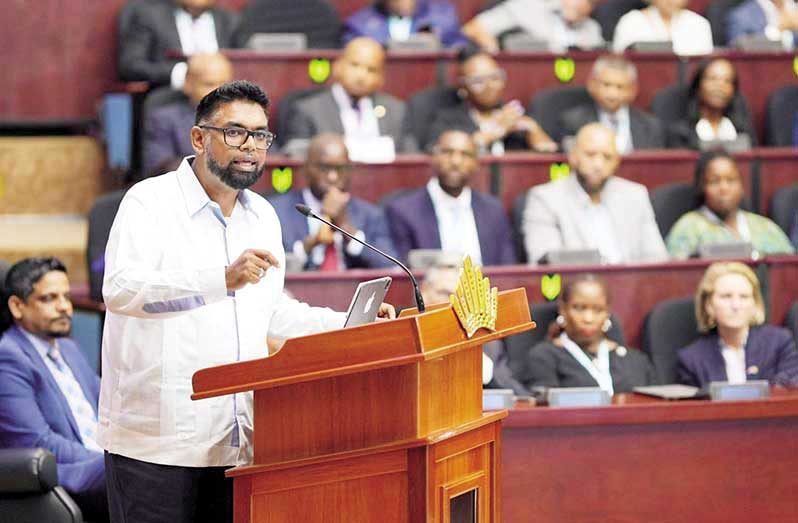-President Ali says, emphasises government’s efforts to make sector viable
BY 2027, Guyana could produce and supply enough sugar to meet the demands of the Caribbean region, the country’s President, Dr Irfaan Ali has said.
“We are ensuring that we build the viability of the sugar sector which require tremendous investment, but we are very confident that Guyana will be in a position in another two years to satisfy the full sugar requirements of this region,” President Ali said at the recently concluded Caribbean Investment Forum (CIF).
While noting that the government is not depending heavily on the oil and gas sector, he pointed out that attention is being given to traditional sectors which includes sugar, and a lot of investments are being made.
Earlier this year at the Albion Sugar Estate in Berbice, Region Six mechanisation works commenced with the estate setting a target of producing more than 55,000 tonnes of sugar by 2026.
“We can have a wall of cane because this mechanised planting is a guaranteed process where we can safely say our replanting programme will be completed; all fields will be into production now,” Yudhisthira Mana, the estate manager had told this publication.
By 2026, it is projected that the Albion Estate will have the capacity to produce over 55,000 tonnes of sugar.
WHAT IS MECHANISATION?
Simplifying the mechanisation process, GuySuCo’s agricultural engineer, Andre Paul explained that it is the modernisation of the field operations to make it more efficient and effective.
Over time, this process is anticipated to decrease operational expenses; lands are undergoing a conversion as part of this process.
“Initially, these were narrow Dutch beds about two to three rods in width and the beds would run from the cross canal to another cross canal, which is a short run and there is a centre drain at the middle that we refer to as four foot…these lands would have had some form of vegetation on them, so the first activity is to clear the lands.”
Simply put, the mechanisation process will see wider beds being prepared for planting.
Over the decades, land preparation for the sugar industry has been done by traditional means, and according to Mr. Mana, it’s ‘fascinating’ to see the mechanisation process come to life. An estimated 2,000 hectares of land were undergoing conversion.
Historically, the manual planting of sugarcane has been the customary practice. The manual harvesting of sugarcane is also a common practice.
Once the cane is harvested, occasionally the roots are left in the ground to foster the growth of new plants.
Intersecting the sugarcane fields are numerous canals.
A typical sugarcane field has canals covering nearly one-eighth of its surface. For irrigation, this complex network of canals is employed. To get the canes to the factories, these canals are also used for transit. From the fields to the factory, sugarcane is transported aboard punts, which are small, flat-bottomed boats.
However, with mechanisation, planting is done using heavy machinery.
REFINERY
Earlier this year, the President announced that the Enmore Sugar Estate is being converted into a sugar refinery.
The proposed Enmore sugar refinery is expected to refine 180,000 metric tonnes of sugar annually and according to President Ali, the government may be looking at importing more.
“Whatever we can supply, we’ll supply then we’ll have to fill the gap so refining will occur here,” he said.
He said that the private sector is expected to play an active role in spurring this progress, as the refinery will present additional demand for transport and logistics services to fuel its operations.
In 2017, the then APNU-led government had closed several major sugar estates across the country, leaving thousands of persons without jobs.
A former Vice-President of the APNU+AFC government, Khemraj Ramjattan, had maintained that the coalition’s move was transformational, as it is not wise to spend “good money behind bad sectors.”
Over 40,000 persons had either directly or indirectly lost sources of income when the estates were closed and investments were stymied.
At the last general and regional elections, the People’s Progressive Party (PPP) government vowed to reopen these estates and upon assuming office, major investments were made to fulfil the manifesto pledge of rehiring sugar workers and increasing sugar production.
According to recent statistics provided by the Ministry of Agriculture, over 8,000 persons are now employed across the sugar belt.



.jpg)








